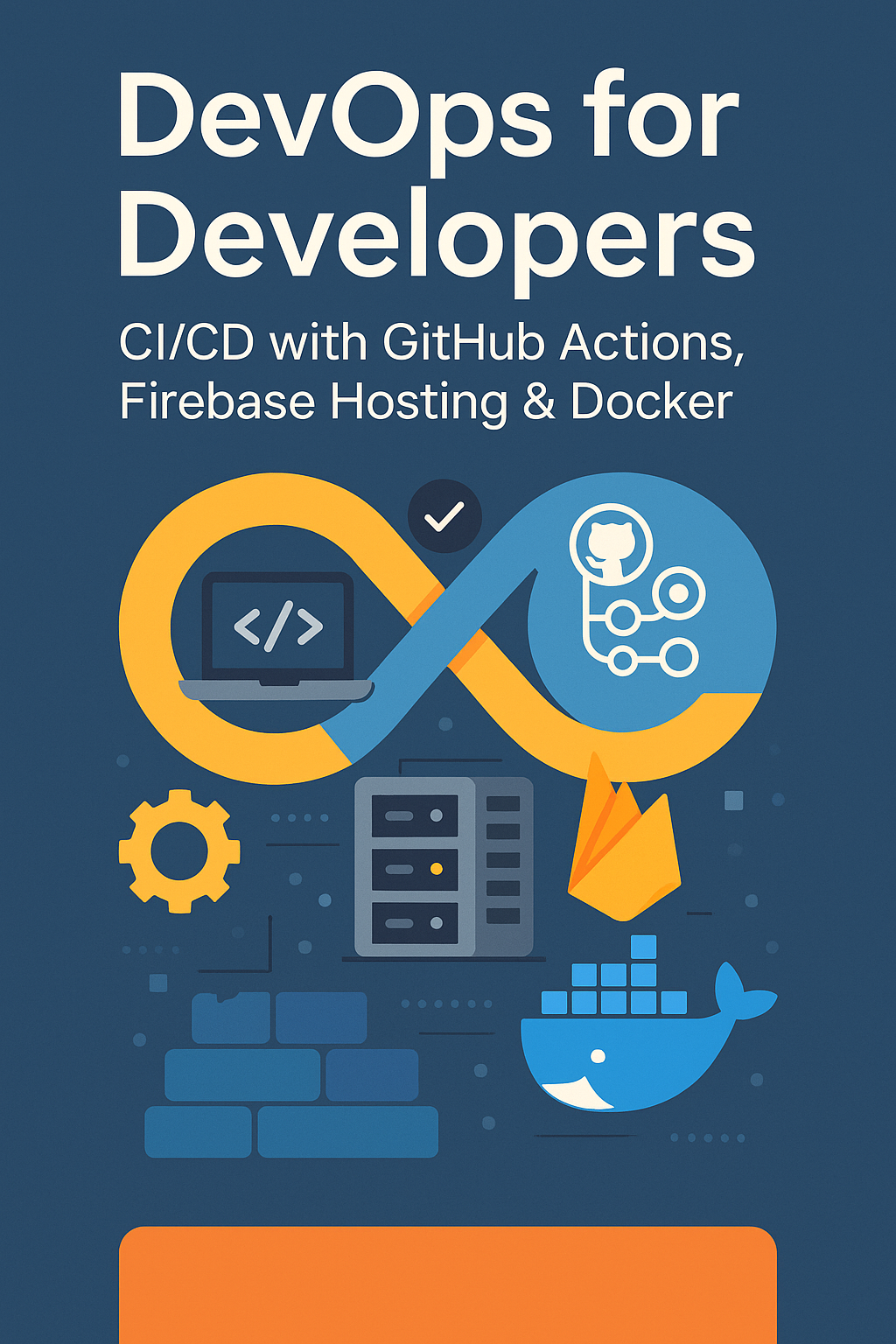
If you’re a developer looking to automate your deployment workflow, this guide will help you set up a powerful CI/CD pipeline using GitHub Actions, Firebase Hosting, and Docker. You’ll learn how to streamline your development process, reduce human error, and ship faster—without becoming a DevOps expert.
🔧 What You’ll Learn
- Setting up GitHub Actions for CI/CD
- Building and pushing Docker images
- Deploying to Firebase Hosting automatically
- Bonus: Securing secrets and optimizing builds
🚀 Why CI/CD Matters for Developers
CI/CD (Continuous Integration and Continuous Deployment) is essential for modern software teams. It ensures that every change is tested, built, and deployed automatically, making your workflow:
- Faster: Automate build, test, and deploy.
- Safer: Avoid manual deployment mistakes.
- Repeatable: Set it up once, run it forever.
🛠 Prerequisites
To follow this guide, you’ll need:
- A GitHub repository
- A Firebase project (with Hosting enabled)
- Docker installed locally
firebase-toolsinstalled globally- Firebase CLI authenticated with your project
🔄 Step 1: Set Up Firebase Hosting
- Run
firebase init hosting - Choose your project and public directory (e.g.,
build/ordist/) - Skip setting up GitHub Actions for now—we’ll do it manually
⚙️ Step 2: Create a .github/workflows/deploy.yml
Here’s a basic workflow to deploy to Firebase Hosting after every push to main:
name: Deploy to Firebase Hosting
on:
push:
branches:
- main
jobs:
build-and-deploy:
runs-on: ubuntu-latest
steps:
- name: Checkout code
uses: actions/checkout@v4
- name: Setup Node.js
uses: actions/setup-node@v3
with:
node-version: '18'
- name: Install dependencies
run: npm install
- name: Build
run: npm run build
- name: Deploy to Firebase
uses: FirebaseExtended/action-hosting-deploy@v0
with:
repoToken: '${{ secrets.GITHUB_TOKEN }}'
firebaseServiceAccount: '${{ secrets.FIREBASE_SERVICE_ACCOUNT }}'
channelId: live
🛡️ Security Tip: Store your Firebase service account JSON as a secret (FIREBASE_SERVICE_ACCOUNT) in the GitHub repo settings.
🐳 Step 3: Add Docker Support
To containerize your app:
Dockerfile
# Example for Node.js app
FROM node:18-alpine
WORKDIR /app
COPY . .
RUN npm install && npm run build
EXPOSE 8080
CMD ["npm", "start"]
Then update your workflow:
- name: Build Docker image
run: docker build -t your-app-name .
- name: Push Docker image to registry
run: echo "Pushing to DockerHub or GCR..." # add your push logic here
🔥 Pro tip: You can use GitHub Packages or Google Artifact Registry.
✅ Bonus: Add Lint & Test Steps
To make your CI flow more robust:
- name: Run Linter
run: npm run lint
- name: Run Tests
run: npm test
🌍 Real-World Use Cases
- Web Apps: Deploy React, Angular, or Vue apps to Firebase Hosting
- APIs: Containerize Node/Express or Python APIs and deploy them via Docker
- Microservices: Manage builds and environments with GitHub Actions + Docker tags
🧠 Final Thoughts
By combining GitHub Actions, Firebase Hosting, and Docker, you create a fast, flexible, and scalable CI/CD pipeline tailored for developers. Whether you’re shipping a web app or backend service, automation gives you the power to move faster and with confidence.



1 Comment